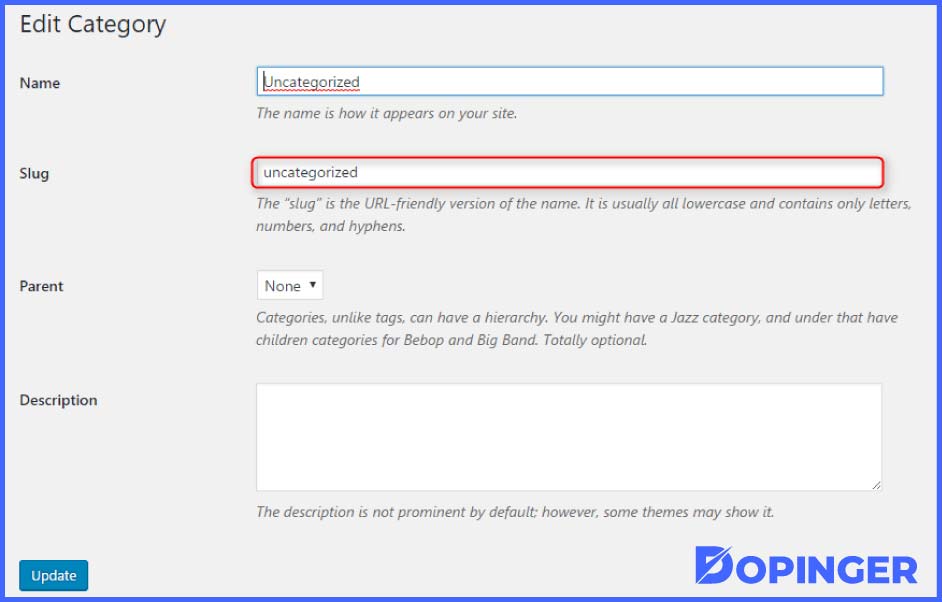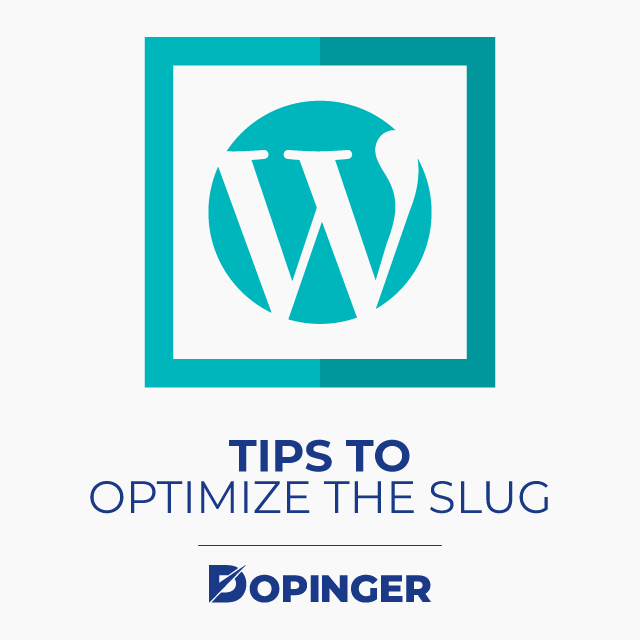If you are into SEO or website development, you have undoubtedly heard the word slug. This term defines the final part of the URL that identifies a page within a website. In short, it must be seen as that part of the URL that summarizes the content of the page in one or more keywords. You should know and learn how to optimize the slug in WordPress because it has great importance: it is understood by search engines and read by users as important information on the web page.
A slug is nothing more than the part of a website URL that identifies a specific page and should be very easy to read. A slug is always written in a form that explains the content of the page. Here is the URL of an article from our blog: https://www.companyname.com/slugs-wordpress/. The slug, in this case, is “Slugs WordPress”.
A slug is unique to each post, page, or archive and will tell a browser exactly where to go. But there’s more to it, and there are ways you can use them to improve your site’s SEO (search engine optimization) and user experience (UX).
So let’s start by looking at what a slug is and then take a look at how to optimize your slugs in WordPress.

Where Can We Find Slugs in WordPress?
Before we delve into tips for optimizing slugs, let’s take a quick look at where they are in your WordPress blog administration.
Articles And Pages
This is obvious, but let’s start from the beginning. You can customize the slugs of all your posts and pages in WordPress. Please do not deprive yourself of it!
Categories And Keywords
Yes, just like articles and pages, your categories and keywords also have their slugs. Go to the categories menu and to the keywords menu to customize the slug for each item.

Why Should You Optimize The Slug Of Your Pages?
Slugs are essential for two main reasons:
- This is one of the signals taken into account by search engines when ranking. They read the slug and try to figure out what a page is about.
- Easy-to-read slugs help users identify what content will be on the page. For example, the slug for this page https://www.companyname.com/google-seo/ is “google-SEO,” which tells users precisely what kind of information they ought to expect to find on this page.
Optimizing your slugs will give you an advantage in terms of SEO and usability. In the SEO world, slug optimization is the same as that of creating SEO friendly URLs.
How To Define A Slug And Include It in A Permalink in WordPress
Don’t think of it as a complicated process. With these few steps, you’ll get the hang of it.
Step1: Define the Structure of Your Permalinks
First, you need to configure the structure of your permalinks (URLs of your pages). To do this, you must proceed as follows:
Access the WordPress administration area, and click on the “Settings” menu then on the “Permalinks” sub-menu.
Then you have to choose a structure for your permalinks. There are several predefined settings you can choose from.
I advise you to choose a structure where your article’s slug is placed directly after the name of your domain name. Because as explained above, the keywords present in your title must also be present in the first positions of the permalink of your article page. And this to help search engines to reference your article better. For my part, I chose a custom structure, with the slug positioned just after the domain name, then I added a static “.html” suffix.
Also, I draw your attention to a significant point. It would be best if you did not change your permalinks’ structure on a website or blog, which is already in production, without setting up a redirect mechanism. Indeed like, your pages are already known by search engines or referring sites by the existing structure. These may become untraceable, and your visitors will land on your 404 pages. There is a solution all the same. It consists of creating permanent redirects from your old URLs to the new ones.
Step2: Edit And Refine The Text of Your Slug In WordPress
WordPress automatically generates the slug for you. For this, it is based on the title of your articles, pages, and the names of your categories and labels. The text of the slug is generated by replacing spaces with dashes and capitals with lowercase and eliminating special characters and punctuation marks.
However, you can modify and refine the value of this text. And keep only the keywords that you are targeting for the SEO of your pages and articles. Indeed a permalink (URL) cannot respect the spelling and grammar rules. You can thus delete all determinants and prepositions as well as the other words that you will have added to reinforce the sensational aspect of your titles.
For pages and articles, the modification of the slug is in several places. For example, in the permalink section, at the side column of the WordPress content editor, or if you have installed the Yoast SEO plugin, which is one of the best WordPress plugins to have from day one. You can edit it in the “Edit metadata” section below the content of your post or page in the WordPress editor.
For the categories and labels, a slug field is present below the Slug field, at the level of the modified form of the latter.

Four Tips For Optimizing The Slug
In this post from the Yoast SEO plugin, four simple steps are presented to obtain a winning slug that grabs users’ attention and is a clear signal of ranking for search engines.
1- Include The Keyword
After reading the article, you should already have realized that entering the keyword in the slug is a must. It should make the content of the post or page clear.
2- Use Functional Words
URLs created by default often include articles and conjunctions. These words lack real meaning. Optimize the slug by entering only applicable words.
3- Add A Focus
Delete all unnecessary words from the URL. Reduce where necessary to create a precise guide. Remember that the slug is unique, and you will not be able to use it again. So use it for the right content.
4- Keep It Short And Descriptive
URLs are shown in search engine results. Please don’t fill in too much information; keep it short and well described, so it’s easy to remember.
Need Clarification?
Wrapping It Up
A slug in WordPress is an excellent tool for getting better search engine rankings and creating a great user experience. Remember to optimize it before publishing to avoid problems with 404 errors and redirect issues.
Frequently Asked Questions About
A slug is unique to each post, page, or archive and will tell a browser exactly where to go.
You can customize the slugs of all your posts and pages in WordPress.
Yes, just like articles and pages, your categories and keywords also have their slugs.
In the SEO world, the process of slug optimization is the same as that of creating SEO friendly URLs.
Remember that the slug is unique, and you will not be able to use it again. So use it for the right content.





No comments to show.